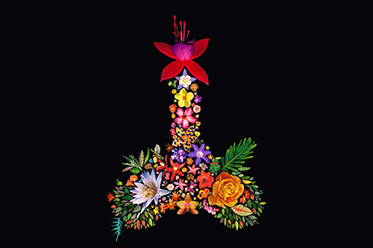 Vital signs: interpreting the archive presents a unique opportunity for contemporary artists to engage with and creatively interpret the collection of the Australian Lesbian and Gay Archives (ALGA).
Vital signs: interpreting the archive presents a unique opportunity for contemporary artists to engage with and creatively interpret the collection of the Australian Lesbian and Gay Archives (ALGA).
Curated by Angela Bailey and Nick Henderson, Vital signs features the work of Marcus Bunyan, Penny Byrne, Ray Cook, Deborah Kelly, Peter Lambropoulos, and Salote Tawale. Each of the artists have a rich art practise that considers social justice, activism and GLBTQI cultures and will engage with different aspects of the collection to inform their work.
In an Essay accompanying the exhibition, Jason Smith states: “Archives in all their forms reassure us that the material culture that has helped define who we are – named us, classified us – exists to continue to shape our contemporary vision and our world.”
“Vital Signs affirms the archive as a living, essential, generative entity for each of the six participating artists, and by extension for all of us for whom the preservation of, and access to, the signs of our communities is a fundamental imperative.”
“Marcus Bunyan’s photographic works has for many years elaborated personal narrative and the fluctuating interrelationships between identity, sexuality, space, time and environment. His work here is to amplify unheard voices and hidden lives, continuing his interest in revealing marginalized sexual histories.”
“Penny Byrne has used the extensive badge collection of the Archives to reflect her lesbian history and on the social and political communicative power of the badge as an object that identifies the individual and the collective. It is the culmination of almost a decade of thinking about the galvanising power of this everyday form.”
“Ray Cook’s reinterpretation of a photographic archive to construct a fifty-year narrative around ‘Lotti’ juxtaposes a particular history of community and cross-dressing with Cook’s personal image library of family and friends, and in doing so his new renditions remind us that the public archive nourishes identity on a very personal level.”
“Peter Lambropoulos’ engagement with the late David McDiarmid’s 1990s mixed tape Toxic Queen – Funeral Hits of the Nineties, honours the commitment to self-awareness, proclamation of identity and community that was the bedrock of McDiarmid’s creative and personal/public life.”
“Deborah Kelly’s work is immersed in community and memory and, as she has suggested, the unpredictable mechanics of remembering and misremembering. Taking her cue from the ACT UP floral clock action of 1991 Kelly’s work is concerned to acknowledge and treasure bravery and imagination in the struggles of the past from which we continue to learn and benefit.”
“Salote Tawale’s long engagement with archives and self-portraiture have enabled her to consistently address and dismantle the structures of colonialism and modernity.”
“As this exhibition clarifies, the exchange between artists and collections is dynamic and invokes the deeply personal as much as the political. Part of the intrigue of these artists’ activities here is that new works cannot be constituted without access and reference to the Archives’ collection.”
“It illustrates the potential for archival material to be reconfigured in discursive, imaginative contexts that keep the vital signs of the past alive and kicking in the present.”
The Archives were established in 1978 and for the last 35 years has actively collected and preserved GLBTQI material from across Australia and actively sought to educate a wider audience about Australian GLBTQI history and sharing the rich and diverse histories of the GLBTQI communities for future generations.
Vital signs: interpreting the archive is presented as part of the Cultural Program of the International AIDS 2014 Melbourne Conference in Melbourne and considers the shared histories of the GLBTQI and HIV communities in a contemporary representation.
Vital signs: interpreting the archive
Blindside – Nicholson Building, Level 7 – 37 Swanston Street, Melbourne
Exhibition continues to 27 July 2014
Free entry
For more information, visit: www.alga.org.au or www.blindside.org.au for details.
Image: Deborah Kelly, Acting up 2014 (in memory of the Floral Clock action, 1991) Paper collage on Stonehenge cotton paper with pigment ink, 56 x 7.5cm
